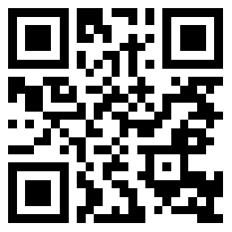11 Elements of a Successful HSE Management System
One thing we’ve learned is: whether you are a safety employee for a small to midsize manufacturer, or managing a remote site project with thousands of employees, you needa well-documented occupational health and safety management system (OHSMS) to ensure that you and your people are safe.
Your company’s system must be written down, communicated, and practiced.Most successful occupational health and safety management systems contain the following 11 key elements:

1. A Way to Control and Distribute Up-To-Date Documents
Whether you use Google Drive, another cloud platform, or good old fashioned paper, every HSE system needs a way todistribute up-to-date documents to the right people.Creating protocols in this area helps ensure that employeesalways have access to current and correct safety information.
2. Safety Inspection Checklists
Creating safety inspection checklists serves many purposes—theyestablish a baseline for the quality of inspectionsno matter who is performing them, candecrease the amount of time it takes to perform inspections, and provide data onareas of safety that are improving or decliningover time.
3. Risk Assessments
Risk assessments are a necessary function of a successful OHSMS to help you protect employees from potential harm, and your business from potential fines and lawsuits. After identifying potential hazards to your workers, you candetermine areas of safety non-compliance and devise and implement solutions.Including this in your HSE systems, and regularly updating your distributed documents for known or potential risk hazards, can greatly reduce injuries and risk.
4. Emergency Response Plan
Although we hope you never have to use an emergency response plan, it’s always better to have one in place than to scramble during an emergency.OSHA requires emergency response plans to include how to report an emergency, evacuation procedures and assembly points, procedures to shut down project operations, rescue and medical duties for any workers assigned to perform them, and contact information for individuals with more information.
Additionally, emergency response plans can contain information on local hospitals and medical services, and medical evacuation procedures.
5. Training Program and Documentation System
Employee safety training programs can include fire, tornado, and earthquake drills, accident simulations, first aid, and even health and wellness programs.These basic safety training protocols can save lives in the event of an emergency, and prevent further safety hazards.Other types of training include correct use of PPEs, forklift safety, and hazardous waste management.
While OSHA does not require documentation of all types of training, it’s a best practice to keep documentation—these notes can be useful when planning future trainings.
6. Internal Audit Policy and Schedule
Health and safety audits are another great way toensure compliance with safety laws, as well as identify strengths and weaknesses in your HSE management system.Either an internal or external auditor can perform the audit, and no matter which route you choose, audits should be performed on a regular basis. Documentation from audits can be used to compare improvements and issues from year-to-year, identify trends, pinpoint risk, and create new safety initiatives based on audit data.
7. List of Laws and Health and Safety Regulations for Compliance
OSHA requires many employers to display their Job Safety and Health poster in aconspicuousarea where employees can see it. This poster informs workers of their rights under the Occupational Safety and Health Act. Although not required, it can be helpful to display additional health and safety law and regulation information in the same spaceto encourage employee awareness and compliance.
This could also serve as a great place to displayhelpful health and safety information, and potential known hazards and risks of the job.
8. Experienced HSE Team
An all-star health and safety team is key to ensure that your QHSMS is being properly implemented in the workplace on a day-to-day basis. HSE professionals focus on preventing accidents and injuries, implementing proper guidelines and regulations, and ensuring compliance.
Byperforming regular risk assessments, evaluating worksites, training employees, and pinpointing any potential hazards,HSE personnel are paramount for ensuring your worksites are safe and compliant.
There are many HSE certifications available spanning different industries, allowing you to hire HSE personnel that understand the ins and outs of your company’s safety concerns. Some of the fundamental HSE certifications available include:
NSC Advanced Health and Safety certificationNEBOSH International General Certificate (IGC)NEBOSH National CertificateNEBOSH Construction CertificateNEBOSH Oil and Gas CertificateIOSH Managing safely CertificateOHSAS 18001/ISO 45001 Occupational Health and safety lead auditors Certification.Certified Safety Practitioner (CSP) Certificate.Certified Safety and Health Manager (CSHM) Certificate, etc.
There are also supplementary HSE certifications that health and safety professionals can obtain to specialize for your industry and needs including ladder safety, asbestos awareness, PPE certificates, first aid, fire safety, electrical safety, and more.
Although health and safety is a growing field, it can still be difficult to findthe right professionalsfor your OHSMS, especially if you need to hire them quickly.
9. Measurable PERFORMANCE METRICS
Every business relies onperformance metricsto improve their bottom line, and HSE departments are no exception. These metrics help identify areas that need improvement, as well as trends over time.Key performance indicatorsfor health, safety, and environment include:
Lost Time Rate (LTR)Total Accident Rate (TAR)Accident Severity Rate (ASR)Total Recordable Injury Rate (TRIR)Experience Modification Rate (EMR)Working Days Since Last Incident
10. Regular Meetings and Communications Strategy
Creatinga consistent meeting schedulefor health, safety, and environment staff is key for reviewing current HSE strategies and successfully implementing new initiatives for your OHSMS. Additionally,putting a clear communication plan in place fosters collaboration and reduces confusion during emergencies.
Schedule HSE staff meetings on a weekly or biweekly basis, and make sure to assign a meeting leader and prepare an agenda to ensure efficient and effective meetings.
Creating a contact sheet for all HSE personnel, a group in email or your internal communications tool, as well as an easily accessible work schedule,encourages transparent communication among the team.
11. Regular Management Review
Every HSE management system needs to be reviewed to verify that current goals are being met and new initiatives are being put in place and practiced regularly. Review of your management system and team by senior leadership should be conducted on a regular basis.
This keeps staff and the system accountable, and presents the opportunity for discussion between safety personnel and upper management to findareas of improvementand brainstorm new ideas.
The purpose of an occupational health and safety management system is two-fold. First, we all seekto prevent illness and injury, and this requires some degree of systematization and integration of general management practices with health and safety.
Second,when illness or injury occurs, you need a well-established and rehearsed plan to ensure that the response is appropriate and orderly. This will enable you to effectively control injuries and illnesses, reducing the risk for unnecessary recordables and potential lawsuits.
You should support these systems because you care deeply about those you are responsible for, but there is also a clear business factor at play:poor management of health and safety directly affects the bottom line in any organization.
From the cost of rescue to a drop in employee morale,mismanagement of health and safety is very expensive.
We encourage you to use the checklist above by gathering your team and reviewing whether each of these steps has been implemented. If not, create a plan to put them in place.








 +61
+61 +86
+86 +886
+886 +852
+852 +853
+853 +64
+64


